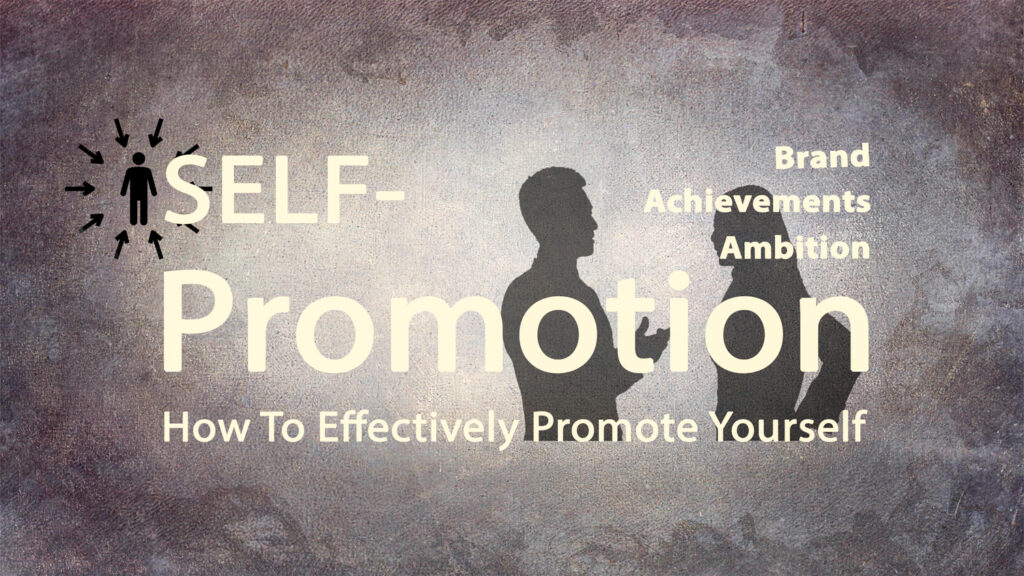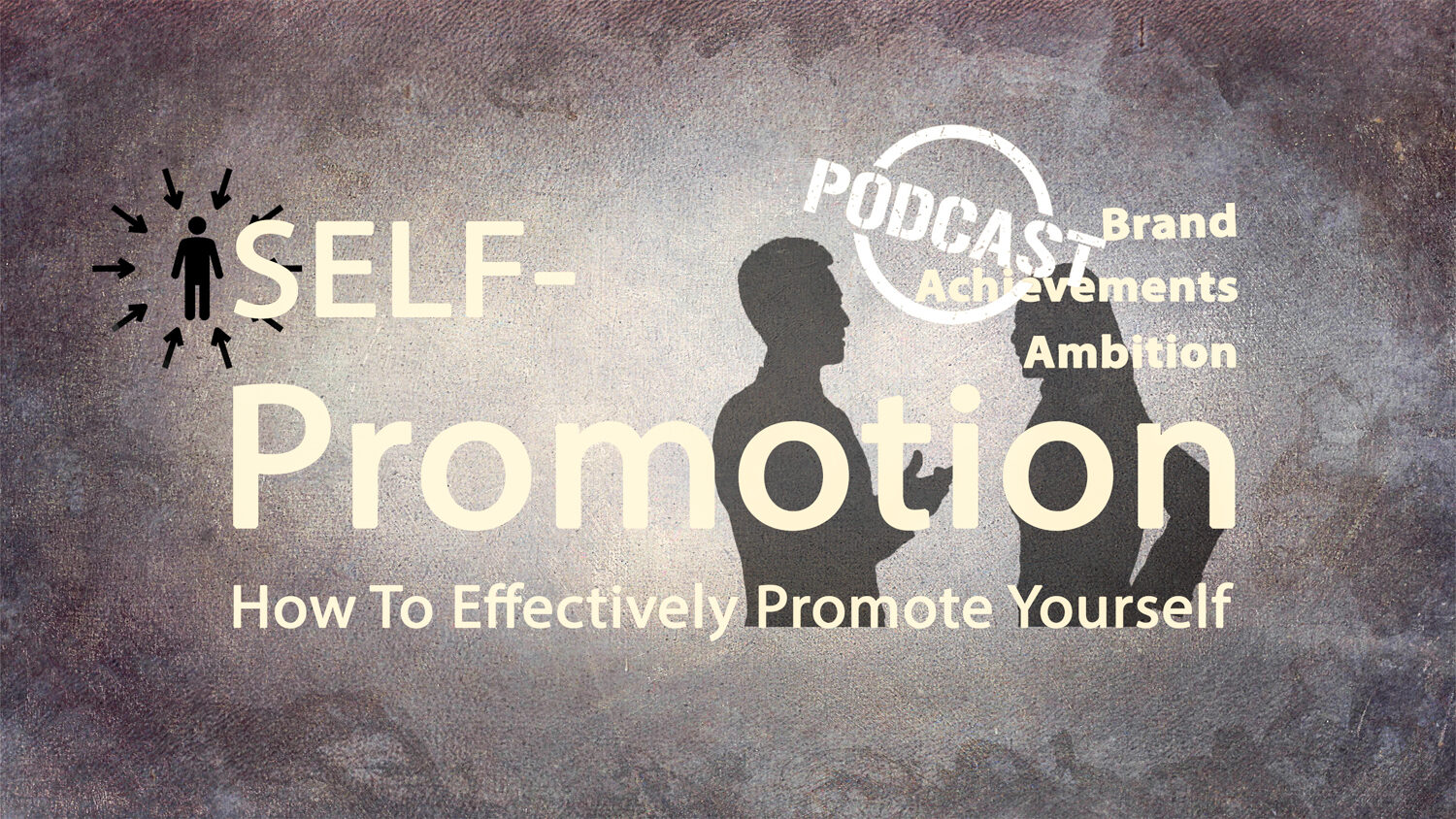Janet came to me asking for help. She said, “I hate talking about myself” and “I’m always lost for words, especially with senior executives.” Janet is not alone in how she feels. Many of the clients I work with either don’t like talking about themselves or don’t know how to promote themselves effectively. As a result, they don’t forge critical relationships needed for advancement.
Most of us have witnessed the wrong way to promote ourselves. We don’t need to “manage up” or “suck up to the boss” to get ahead. What we need is a better plan. In this article, I will detail some steps you can take to create that plan and how to successfully build those relationships.

People ask me “Why it is important to promote myself?” and “Won’t my results speak for themselves?” The answer is, up to a point. After a certain grade level, promoting yourself becomes paramount to your long-term career success.
If you think of yourself as a product and the company as your customer, then promoting yourself is your marketing plan. The purpose of marketing a product is to highlight the product’s benefits, to distinguish it from the competition, and to help create value in the eyes of the customer. Successfully promoting yourself achieves the same result. It creates the narrative for your brand, provides you the recognition for past accomplishments, allows you to communicate your career ambitions, and it sets you up for consideration for future roles and opportunities.
Routine Vs. Proactive Actions
There are two types of actions that will promote your brand, routine and proactive. Routine actions are those that happen routinely during the course of executing your job. Participating in meetings, leading projects, presenting to executives, and attending company events are great opportunities to promote yourself. These impressions are important but insufficient for promotions. In addition to that, you need to take proactive actions. Proactive actions allow you to select the audience and the message. In the world of marketing, this is called “target marketing.” Target marketing allows you to concentrate your efforts and message on the audience that matters.
Preparing for Proactive Actions
A proactive approach is one that creates a link between you and the individuals who might have influence over your future. These individuals are typically executives that reside in your career path. Preparation is paramount to effectively promote yourself. This preparation requires a strategic approach, careful thinking, and decision-making. The following are six actions that will help you prepare for proactive self-promotion.
Describe Your Brand – Everyone should have a brand strategy. See my article on Personal Product Management if you need some help doing so. You should define what you want your brand to be, and you should enlist the people you work with to identify what your brand is. I recommend you create a list of words that best describe what you want your brand to be. When you create your list of words, you should consider putting them into a word cloud. Place the word cloud somewhere that’s visible. Perhaps use it as your wallpaper on your phone or computer. This will keep the message front and center, and it will serve as a reminder so you can tailor your actions to those words daily.
Define Your Audience – Make a list of the people you think play decision-making or advocacy roles for your future career opportunities. Consider including your manager’s peers, your skip-level manager, and peers at that level. In some cases, you may need to go up another level, although I would only recommend that with assistance. Once you’ve identified your audience, it’s time to research each person and note their style and interests and create a strategic approach. Each person is different so avoid a one size fits all approach.
Detail Your Accomplishments – Make a list of your accomplishments and include the impact they had on the company, the customer, and the competition. Limit your list to your “top 10 hits” and list only the things you are most proud of. Once you have your list, weave the list into a storyline. You will use the story during the conversation with your target audience, most likely at the beginning.
Identify Your Aspirations – Like the list of accomplishments, make a list of your career aspirations. Be as specific as possible on the type of role that you enjoy, the breadth of responsibility you are seeking, and the reach you would like to have. The more specific you are the more this will help shape your conversation. This list will serve to plant seeds in the mind of the audience, so they will consider you when they engage in succession planning discussions.
Create Your Questions – It is important to lay out a list of questions you might want to ask the people you meet with. Make a list of 20 or so questions and pick questions from the list based on areas of interest or the topics you plan on discussing. You should include questions about leadership style, development, building effective teams, strategy, and career planning. Obtain their point of view on these topics to provide you with insights you might not otherwise learn.
Anticipate Their Questions – Expect the unexpected when having a discussion with leaders. They may want to ask your opinion on a particular topic, or they may test you on topics outside of your area of expertise. You may want to chat with your mentor or coach and brainstorm questions that might come up during these discussions.
Tell a Story – Once you have prepared the above material, start building stories for your accomplishments and aspirations. This will help structure the discussion. You may want to create two or three variations and choose which variation applies to a particular individual.
“Practice Makes Permanent”
A friend with whom I golf reminds me that “practice makes permanent.” If you go out and practice your golf swing incorrectly then you will make that swing permanent. If you practice your golf swing with instruction and feedback, then you will likely groove your swing properly.
I recommend you spend time role-playing upcoming sessions with your coach, mentor, or colleague. Practice your pitch and get some feedback so you can fine-tune your message and delivery. These sessions are also a good place to practice the unexpected. Instruct your partner to throw “curveballs” at you so you can improve your quickness. These practice sessions will also reduce your stress and the discomfort that comes along with self-promotion. Remember these are marketing ads so you want to get it right.
Engaging in Proactive Self-Promotion
When it’s time to start setting up your meetings, start with the easiest person and work your way up to the most difficult. Starting with someone you are comfortable with will allow you to practice, hone your message and become more proficient when it counts. Also, remember that self-promotion is a dance that requires tact and finesse.
The purpose of the talking points and the storyline is to find connecting points. Think of them as a “fishing expedition.” We want the leader to ask “Tell me more” when we present a compelling talking point. Think about the talking points carefully and make them enticing.
It’s important to get into an easy cadence and to enable a natural delivery. This will help you deal with the nervousness that accompanies these types of meetings. Practice until you can deliver the message with confidence.
Lastly, it is a good idea to end with a request. Ask the leader if they are willing to mentor you, meet again, if they are open to you shadowing them, or if they could recommend additional people you should meet. Most leaders will be open to these requests.
Most of us find it uncomfortable to market ourselves and to promote our brand. Self-promotion is a requirement to achieve our long-term career goals. Identify your brand messages, create a list of accomplishments, identify your career ambitions, come up with some questions in advance, and think about how the conversation will unfold. This preparation combined with practice will help prepare you for the discussions. And remember, “practice makes permanent!”
Need Help Organizing Your Thoughts?
If you need help, I’m making my Self-Promotion Worksheet available to everyone for free. You can download the worksheet here. The instructions are simple.
I hope this article was helpful and that you will be able to craft a message that resonates with your audience and helps you achieve your long-term career goals. Drop me a note in the comment section below or through the Contact Me page if you have any questions.
Thanks,

© T. Kahler Coaching, LLC, All Rights Reserved.
